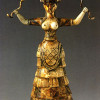
Temple of Artemis at Ephesus
Learning from Rudolf Steiner about Easter and Ancient Greek Moon Goddess Art, Symbols and Signs, SpiritualityEsoteric teachings of Golden Citizens of Ancient Greece
by N Pantovic
Ancient Greek Myth and Artemis as the twin sister of Apollo
In Greek myth, Artemis is the twin sister of Apollo (Sun), a virgin huntress, the Greek goddess of the Moon, named Diana in Rome. On the coins she rests either arm on a staff formed of entwined serpents.
Alexander the Great and Arisotle with Artemis
At Ephesus, Turkey, we find remains of an Artemis (Ἄρτεμις ) Temple destroyed the very same day when Alexander the Great was born. When asked why wasn't she able to protect her own home, the temple in Ephesus, that was burnt by madmen in 356 BC, she said that she was in Pella, the capital of Macedonia (near Thessaloniki), assisting at Olympius and Philip son's birth. The Temple was so impressive that it was together with Egyptian pyramids listed as one of the 7 wonders of the world.
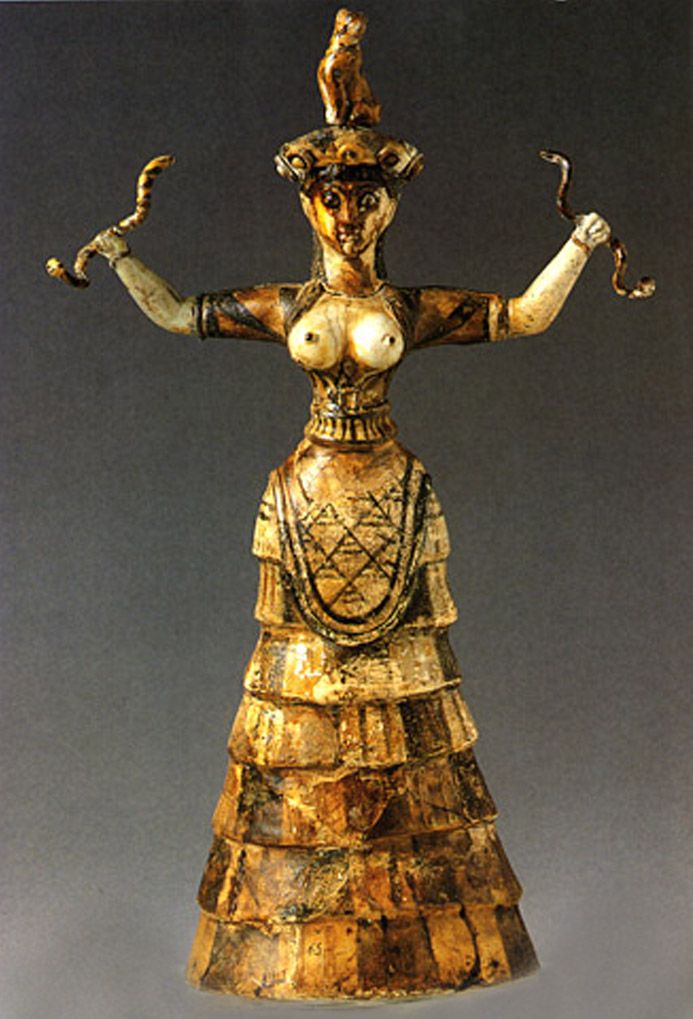
Minoan Snake Goddess Figurine 1600 BC Knossos, Crete
An inscription dating 300 BC, associates Ephesian Artemis with Crete: "To the Healer of diseases, to Apollo, Giver of Light to mortals, Eutyches has set up in votive offering [a statue of] the Cretan Lady of Ephesus, the Light-Bearer."
Rudolf Steiner in his Ephesian Mysteries Lecture meditates that the "two Initiates of the Ephesian Mysteries were reincarnated in Aristotle and in Alexander. And these Individualities then came near what was still to be felt of these things in their time in the Mysteries of Samothrace."
The Sanctuary of the goddess Artemis
"In the Mysteries of Ephesus the whole service that was devoted to her who is exoterically known as Diana or Artemis, the Goddess of Ephesus, was calculated to enable man to experience and enter into the spiritual life and movement within the ether of the Cosmos. We may say indeed that when the adherents of the Mystery of Ephesus approached the image of the Goddess they had a feeling, a sensation which grew into a spiritual listening and may be thus expressed. It was as though the Goddess spoke: “I delight in all things fruitful and creative in the far cosmic ether.”"
Rudolf Steiner quote from the Ephesian Mysteries Lecture, on Meditation and Prayer to Artemis
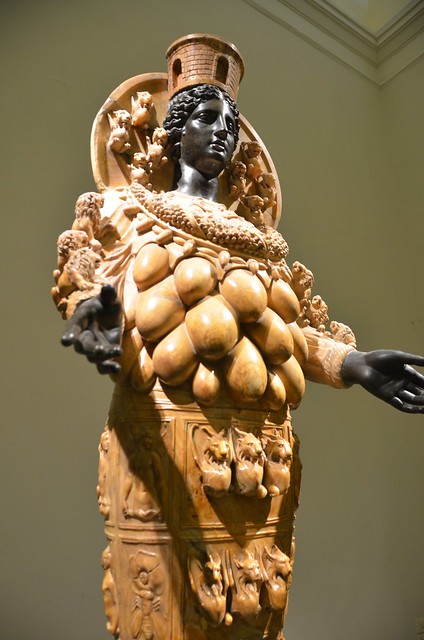
Traditional many breasted Goddess Artemis, 200 AC, in Napoli Archaeological Museum
The temple site was discovered in 1869, by J. T. Wood, an English architect, after a 7 year search
The sanctuary of the Goddess Artemis (R Θ MS + 2 = Dyad - DiaNa) with columns and open cella overlooking sacred rooms was first bulit around 900 BC, and the new Ephesus followed in 300 BC. The Basilica of St John is now located on the Ayasoluk hill, next to the ancient temple, together with the House that was Mary's place of residence from 30 to 35 AC, called “The House of Mary”.
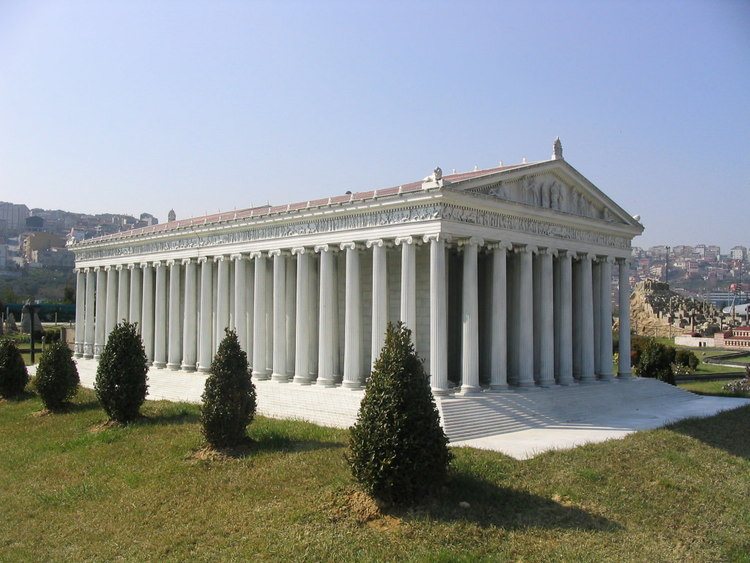
The sanctuary of the Goddess Artemis, a model based on the Temple structure built in 900 BC, Ephesus, Turkey
The Temple had 20 columns in the long sides and 8 on the west front each 184 cm in height. Surrounding circle had a double ring of colomns and they were positioned on an east-west axisa.
The masive Ionic columns were all carved of one piece of marble. The great door was put in place by the Goddess Artemis herself. The Temple was 60 metres wide. There is only one larger than this one and that is Pathenon in Athens that is 70 metres wide. The one in Rome measures
Rituals in the Temple of Artemis
"The spiritual life in Ephesus was filled with radiant light and colour. In this life of inner light and colour there was contained all that they knew of the true dignity of man throughout the Cosmos gathered together in the Easter thought. ... with inner light and intimate joy how the harmony of the spheres had sounded forth to them in Ephesus when they had gazed into the Cosmos from the standpoint of the Moon, how the radiant astral light of the world had shone forth for them, how they had felt it in the Sunlight quivering around the Moon, the Sunlight filled with the spirit of the astral light, even as man himself is filled with living soul. In other places they had not experienced it thus, not at any rate with such joy and gladness and inner artistic understanding."
Rudolf Steiner Quote from the Ephesian Mysteries Lecture, Ritual and Goddess Moon in Ephesus
"How infinitely much had happened in the course of centuries for those who had belonged to this Temple. How much of spiritual light and wisdom had passed through these Temple spaces! Now that the flames broke forth from the Temple, all that had gone on in these Temple spaces was communicated to the cosmic ether. Thus we may truly say: The continuous Easter Festival at Ephesus which had been contained within these Temple spaces has since been written — albeit in letters less clearly visible — written in the great orb of the heavens inasmuch as the heavens are ethereal."
Rudolf Steiner Quote from the Ephesian Mysteries Lecture, The Easter Festival in relation to the Mysteries
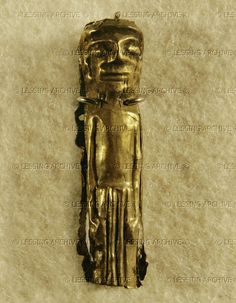
HELLENISTIC Goddess 600 BC Artemis found in Ephesus Turkey
History tells us that, in Ephesus, the Bishop Christostomos had the cult image of Artemis burnt in 406 AC.
Being the centre of the cult for 1,000 years, Artemis was worshiped by the Spring Procession, now known as Easter.
"A deep impression was made on those present when the Temple Goddess thus expressed her joy in all things growing, springing, sprouting in the far-spread ether of the world. And there was a feeling deeply akin to the springing and sprouting of life, a feeling that was wafted through the spiritual atmosphere of the Ephesian Sanctuary as a magic breath. For the Mystery was so arranged and instituted that we may truly say, nowhere have men lived with the growth of the plant life, with the springing and sprouting of the Earth into the plants, as they did in Ephesus."
Rudolf Steiner Quote from Ephesian Mysteries Lecture, symbols of The Easter Festival in relation to the Mysteries
Some of the Ancient Greek's reliefs potray a procession of people gathering in late April / May walking from her Temple to her Birth place on the ancient coastal road. The 6th of May was celebrated as the birthday of the Goddess, who was the daughter of Zeus and the Goddess Leto, one of the 12 Gods that are originally from Olympus (Sacred Mount in Greece).
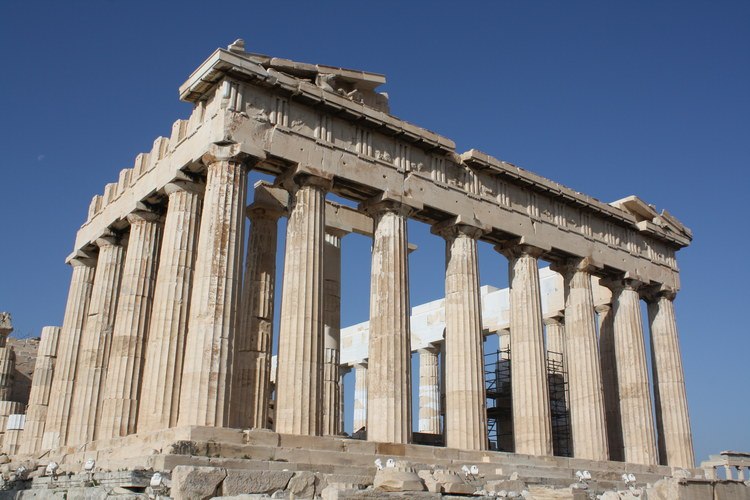
PaRthenon Athens 500 BC
"And now in the JehOvA he felt the entire human being. He felt a premonition of the physical body which he would only have on Earth in the consonants belonging to the vowels; while the latter indicate, in the J O A, the “I”, the astral body, the etheric body. It was through this living penetration into the JehOvA that the Ephesian disciple could experience the final steps of man in his descent out of the spiritual world."
Rudolf Steiner Quote from the Ephesian Mysteries Lecture, about Sounds of Supreme god YHW
"And it is so with many things. Very much of what is now human wisdom was in ancient times enclosed in Temple walls. It escaped the Temple walls, it is written in the cosmic ether and is visible there as soon as a man rises to spiritual Imagination. Spiritual Imagination is, as it were, the interpreter of the secret of the stars. Thus we may say, into the cosmic ether are written what were once upon a time the secrets of the Temples and we can read them imaginatively."
Rudolf Steiner Quote from the Ephesian Mysteries Lecture on Artemis and spiritual Imagination
"In very truth the time will come when man will find again what is truly resting as in a grave, namely the cosmic wisdom and the cosmic light. Man will learn to read once more in the great universe. He will experience the resurrection of what lay hidden in the intervening time of human evolution between the two spiritual epochs."
Rudolf Steiner Quote from the Ephesian Mysteries Lecture on Resurrection of Cosmic wisdom and Light
“Ah! once upon a time mankind was blessed with a divine-spiritual revelation whose light still shone most radiantly in Ephesus. But now all this lies buried. How shall I dig out of the grave what thus lies buried? For surely one would imagine that that which has been can still be found in some historic way, can be found lying in the grave.” And then the Being will answer us as in a similar case once upon a time the corresponding Being answered: “That which ye seek is no longer here; it is in your hearts, if only ye open your hearts in the true way.” "The Easter mood which can never, never think that the spirit dies, but that it rises again and again."
Rudolf Steiner Quote from the Ephesian Mysteries Lecture on Easter
Tomb of Μαυσωλεῖον
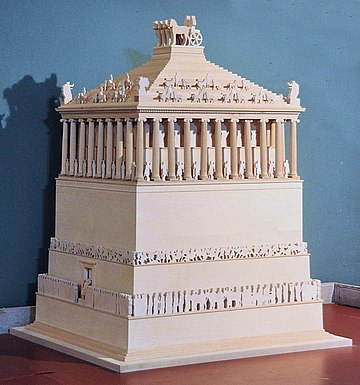
Tomb of Mausolus at the Bodrum Museum of Underwater Archaeology Turkey
The LyČian tombs found at Xanthos, now Turkey. Dated to 390 BC, The first temple tomb in the region, British Museum, London, Great Britain
Tomb of Mausolus (Ancient Greek: Μαυσωλεῖον τῆς Ἁλικαρνασσοῦ; Turkish: Halikarnas Mozolesi) was a tomb built in 350 BC in Halicarnassus (present Bodrum, Turkey). The structure was designed by the Greek architects Satyros and Pythius of Priene.
The Mausoleum was approximately 45 m in height, and the four sides were adorned with sculptural reliefs, each created by one of four Greek sculptors: Leochares, Bryaxis, Scopas of Paros, and Timotheus. The finished structure of the mausoleum was considered to be such an aesthetic triumph that Antipater of Sidon identified it as one of his Seven Wonders of the Ancient World. It was destroyed by earthquakes during 1200 AC.
- Ankh loved and despised by many, have you ever wondered why... An ancient Egyptian symbol often drawn by our wise ancestors
- Ancient Greek Research Paper on Symbols
Learning from symbols , and sounds of the first ever Research Paper by Archimedis - The Art of Dying Well from Jung to Egypt to Malta
The Art of Dying, Jung about Psyche, Dreams and Death Ancient Worlds Rituals Sleeping Lady from Hypogeum Malta Temples 3,500 BC - Ancient Greek Numbers and their Symbols
The Ancient Greek Numerical System Pythagoras The divine number, the holy holy Tetractys, we find as a symbol expressi - Sumerian Temple Hymns
High Priestess Enheduanna and the Kesh Temple Liturgy Holy water and the sacred word, that is all you nee - Dionysus in Neolithic Europe
Ancient Balkans and god Dionysus. The so called sacred topography of the Balkans, the northern frontier of the Roman E - Goddess Axen and Athena
Goddess aXen / Athena and Ancient Egyptian Amarna Heresy Belief in one God in Ancient Egypt know - The First Language
In Search of the Mother Tongue Script of Neolithic Shamans The Archeological Hacilar Settlement of Neolithic Europe dated to 6,000 BC - Script of Neolithic Shamans
Researching Ancient Egypt Rosetta Stone Going back to the Egyptian civilization, the ruler of the Med






Temple of Artemis at Ephesus No comments on Temple of Artemis at Ephesus: